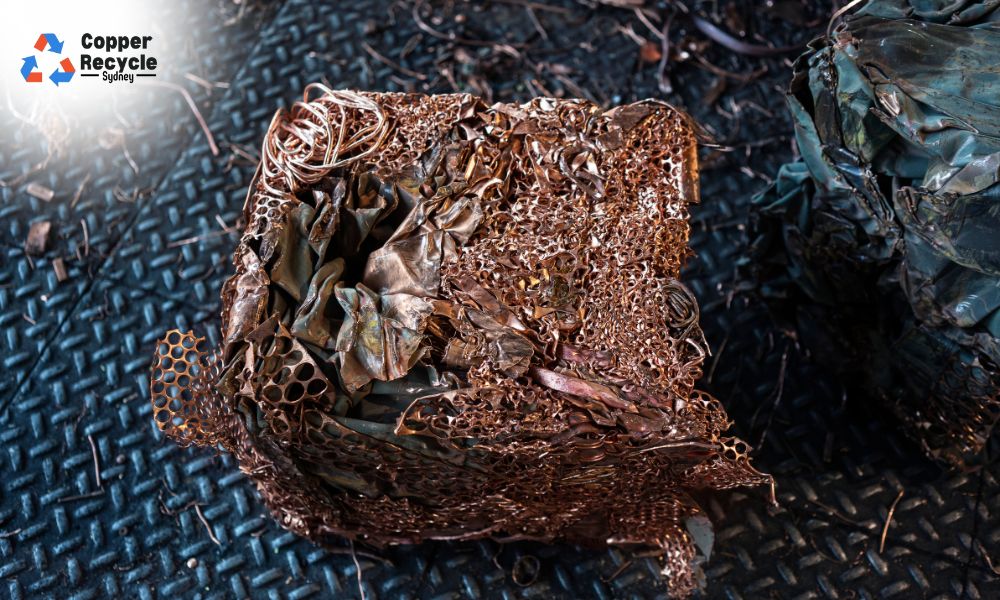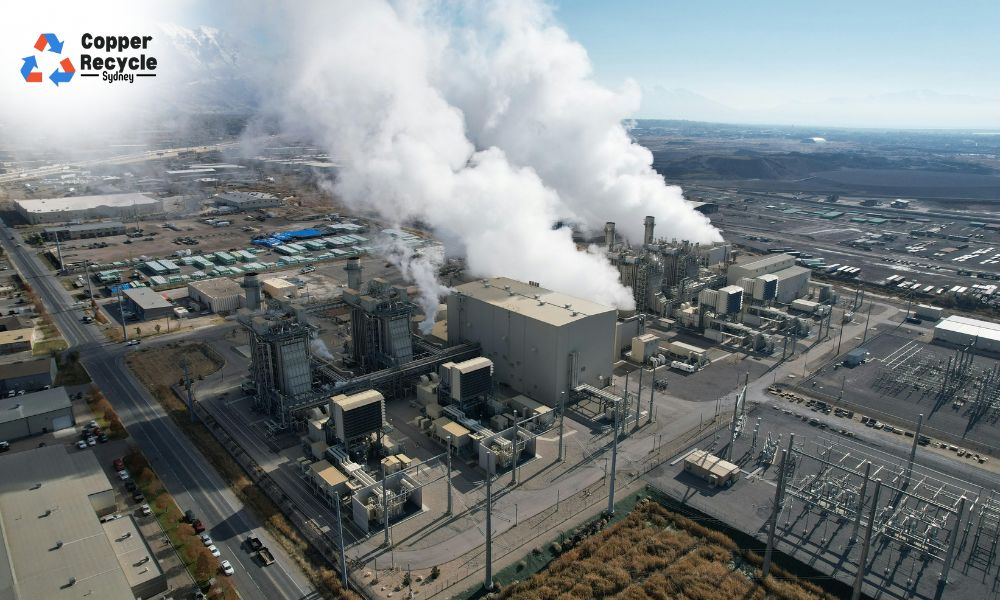
- 0469 306 331
- info@copperrecyclesydney.com.au
- Guildford, NSW 2161

- 06 May 2025
4 Signs You Need a Scrap Metal Bin
Scrap metal buildup is a common problem across many industries from construction and renovation to auto repair and manufacturing. Over time, metal offcuts, parts, or old fixtures can clutter work areas, slow down operations, and create safety hazards. While it may seem manageable at first, unmanaged scrap can lead to inefficiencies that affect both time and cost.
A scrap metal bin is a simple yet highly effective solution for storing and handling unwanted metal material. But how do you know when it’s time to invest in one? Here are four clear signs that suggest a scrap metal bin could significantly improve your workflow and site management.
What Is a Scrap Metal Bin?
A scrap metal bin is a sturdy container specifically designed to hold metal waste. These bins are built to withstand the weight and sharp edges of various metals such as steel scrap, aluminium scrap, iron, and copper scrap. They are commonly used on job sites or industrial settings where metal debris is generated regularly.
Typically, available in a range of sizes, these bins can be placed on-site for the duration of a job or as a permanent fixture for ongoing operations. Depending on the service provider, the bins may be collected and emptied based on an agreed schedule, making them a convenient option for managing scrap without constant manual handling.
Who Needs a Scrap Metal Bin?
Scrap metal bins are useful across a wide range of sectors. Construction companies often deal with beams, panels, and piping that need to be discarded efficiently. Automotive repair shops generate broken parts and metal shavings. Fabrication and manufacturing units regularly produce offcuts and faulty components.
Even property managers and renovation contractors may find bins helpful when clearing out metal fixtures, wiring, or structural elements. In short, if metal debris is produced consistently, having a dedicated place to manage it is not only practical but also highly beneficial.
4 Signs You Need a Scrap Metal Bin
1.Workspace Is Frequently Cluttered with Metal Debris
A major sign that a scrap metal bin is needed is frequent clutter caused by leftover metal parts. These can include sheet offcuts, rods, fasteners, and wiring scattered around the work area. As they accumulate, they start taking up valuable space and can interfere with movement or access to equipment.
Clutter not only creates an unorganised appearance but also poses safety risks to workers and staff. Injuries from sharp metal edges, tripping hazards, or blocked emergency routes become real concerns. Using a scrap metal bin ensures that all waste is kept in one secure, centralised location, contributing to a cleaner and safer work environment.
2. Too Much Time or Money Is Spent on Scrap Disposal
When scrap metal is handled inefficiently, it often results in unnecessary time and cost. Workers may spend hours transporting material to a distant disposal point, or multiple trips may be made to drop off small amounts of metal at a facility. This adds up in fuel, labour hours, and operational downtime.
In many cases, businesses use general waste containers that are not equipped to handle heavy or sharp metal objects. This can lead to damage to the container or fines for improper disposal. A scrap metal bin designed for this specific purpose reduces these issues by streamlining the disposal process and reducing transport and handling time.
3. Large-Scale or Ongoing Projects Produce Constant Scrap
Projects involving construction, demolition, fabrication, or installations typically generate a high volume of metal waste. In such environments, the metal doesn’t just build up it does so quickly and continuously. Without a bin, the volume of debris can become unmanageable within days.
A scrap metal bin offers a scalable solution, allowing scrap to be cleared away as it’s produced. This is especially important on worksites where space is limited, and timelines are tight. The bin helps maintain order and ensures that cleanup doesn’t interfere with project flow or deadlines.
4. More Organised and Efficient Worksite Is a Priority
Clean and organised worksites tend to run more smoothly. Workers know where everything is, including where to dispose of waste. This consistency can have a positive impact on daily efficiency, team morale, and even external impressions from clients or inspectors.
By designating a specific bin for all metal scrap, daily cleanup becomes faster and more consistent. It removes guesswork from the disposal process and keeps debris from accumulating in random areas. Over time, this leads to a noticeable improvement in workplace productivity and cleanliness.
Additional Benefits of Using a Scrap Metal Bin
Beyond the four main signs, there are added advantages to integrating a scrap metal bin into operations. These benefits contribute to smoother day-to-day management and long-term cost savings.
- Saves Space on the Job Site: Without a bin, metal waste tends to pile up wherever there is room often in walkways or near workstations. A designated bin keeps the material contained in one area, freeing up space for movement and active work.
- Reduces Safety Hazards: Sharp metal edges, unstable piles, and loose materials are common causes of workplace injuries. A bin reduces these risks by keeping dangerous items out of high-traffic areas and minimising direct handling.
- Speeds Up End-of-Project Cleanups: Projects often end with a major cleanup phase. Having a bin in place throughout the job reduces the final workload, as scrap is already stored correctly and ready for pickup or removal.
- Enhances Professional Image: Clients, inspectors, and partners often notice the condition of a site or workspace. A clean site with organised waste disposal reflects professionalism and attention to detail.
- Encourages Consistent Disposal Habits: When workers have a reliable place to deposit scrap metal, they’re more likely to dispose of it properly. This improves workflow and reduces the time spent correcting mistakes or cleaning up scattered debris.
Conclusion
Managing scrap metal efficiently is crucial for maintaining a safe, productive, and organised worksite. When metal waste begins to clutter the workspace, consumes too much time and money to dispose of, or is produced in large volumes due to ongoing projects, it’s a clear sign that a scrap metal bin is needed. These bins offer a practical and reliable solution to collect and contain scrap in one designated area, reducing risks and improving site cleanliness.
In addition to addressing immediate challenges, scrap metal bins provide long-term operational benefits. They help free up space, enhance job site safety, and encourage better waste handling habits among workers. For any business that regularly deals with metal materials, investing in a proper scrap metal bin can lead to smoother workflows, cost savings, and a more professional appearance that reflects well with clients, inspectors, and project stakeholders alike. Contact us for Scrap Metal Removal in Sydney.




